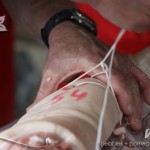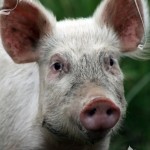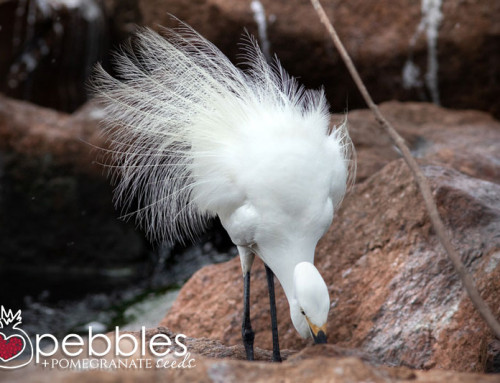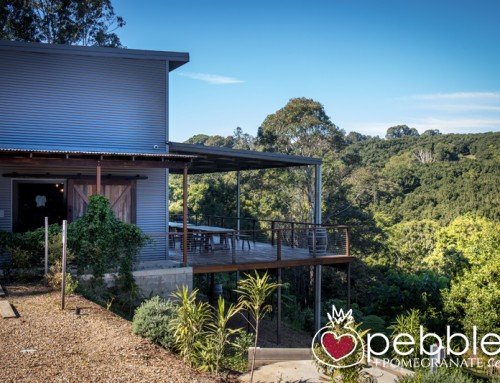Many cooking styles and trends have emerged over the years to fire up our passions in the kitchen. But for me, the one that stands out most strongly — for all the right reasons — is the concept of nose-to-tail cooking.
Like the name suggests, this method involves using every part of the beast, from the nose to the tail. It strays away from using only premium cuts of meat to focus on lesser-known ones as well, ensuring the entire animal is used in some way, rather than going to waste.
In background, I am a meat eater, even though I sometimes wish I wasn’t. And so is a large percentage of the Australian population – some 95% – which means I am not alone. Having said that, I am very conscious about how the meat I consume is produced. I want to know how the beautiful creatures that find their way to my dinner plate are treated during their life and at their death, as well as what becomes of them afterwards. It is a topic many people would prefer not to think about, but I believe it is important. And a collective of nose-to-tail advocates is slowly changing popular perception and reminding us about why it is so important, as well as how good it can taste. There are some fabulous, almost forgotten, dishes out there and I have definitely enjoyed a few ‘wow’ moments of late in discovering their recipes.
I also think the concept is a glorious way to honour life. Let’s face it, these beautiful creatures are farmed for their meat. That’s a fact. So we should honour every inch of them, and every part of them, from the moment they are put to death. In wasting nothing we celebrate that their life has not been in vain.
One famous nose-to-tail advocate is legendary UK chef Fergus Henderson, who has received accolades for the fabulous dishes on offer at his London venue, St John Bar and Restaurant. He has also written two fabulous books, Nose to Tail Eating and Beyond Nose to Tail: A Kind of British Cooking: Part II.
Along with an increasing number of food bloggers and writers, he writes about delicacies and hearty dishes that were once common place but are no longer so. Yet more than just what happens after death, I firmly believe more thought should also be given to life. To the conditions livestock are raised in, the diet they are fed and their general quality of life, as well as the slaughtering process.
Again, it is a process people generally prefer not to think about, lest they lose their appetite, but it is important to highlight. For example, I generally insist my beef and lamb are grass rather than grain fed and my poultry and eggs are free range rather than barn raised or battery. I don’t insist on organic though, because while it is preferable, I don’t believe certification defines an animal’s quality of life.
As long as the livestock roam relatively freely and are treated fairly, I am happy. If they are organic, well that is just a bonus.
Defining further, there are ‘farms’ and then there are ‘farms’. The ‘good’ farms compassionately raise their livestock, letting them roam free over large open spaces. Their environment is a pleasant and peaceful one. Then there are the other, not so good, kind; small indoor or outdoor enclosures into which the livestock are squashed and forced to endure the elements – the scorching heat of the sun, if they are lucky enough to see it, the saturation of unrelenting downpours, the condemnation to darkness or the glow of an artificial light source. I am not sure which fate I would consider the worse. More often than not, they are force-fed nutrient-depleted food for the sole purpose of putting on bulk. It’s a pitiful existences while they wait their turn to be slaughtered in an environment as prolonged as it is terrifying.
Now, I will no doubt come in for severe criticism for my opinion, and I am not pointing any fingers, but I do believe it is something everybody should put at least a little thought into, to decide where their own principles lie.
While it may seem a foreign concept to some, for others it has always been a way of life. I for one had a fairly nose-to-tail upbringing, and to my recollection it wasn’t always so great.
As a child I can clearly remember being faced with a huge stockpot containing a whole pork head bobbing up and down in the water as it was turned into a gelatinous pork brawn. I think I actually found this quite traumatic, so I never really developed a taste for the brawn until recently, when I discovered it is really quite nice. This suggests the bobbing head may have played psychological tricks on my tastebuds.
I was also never a huge fan of liver or kidney, but I think it is very much down to the preparation. One of my all time favourite comfort dishes is leberknoedel soup, which loosely translates to a liver dumpling soup. Sounds gross, right? But trust me when I say this is the ultimate comfort food.
Leberkase is another liver-based dish I just love and ox tail soup . . . ahhhh, magic. As for osso bucco, well, whenever this is braising away on the hotplate, there is always a fight for the marrow. In our household one needs to be stealthy and quick – if I let my kitchen guard down for even a moment, grand theft marrow may well occur.
While farming practices may have changed over the years, so have those in butchering. Once upon a time a butcher would have an array of nose-to-tail cuts as part of their everyday selection. But now, due to the popularity of premium cuts, and the lack of consumer knowledge about how to deal with the ‘lesser’ varieties, meat retailers are succumbing to consumer demand and stocking premium cuts, to the point where some no longer even buy an entire beast, preferring to order their edited selection that arrives conveniently pre-packaged in a cardboard box. The result is, we are slowly losing the art of butchering as a whole, let alone the art of preparing these specialised cuts.
The wonderful thing about the Sunshine Coast is we have a large number of livestock providers who conscientiously care about the wellbeing of their livestock. This means we are blessed with ample choice when it comes to humane livestock conditions. There are also many butchers who have nurtured personal relationships with farmers to ensure the best possible meat selection.
One option is to ask your butcher for free range, organic or grass fed meat. If they don’t stock any, make your preference known and encourage them to support your request or shop around for a butcher who does.
Additionally, the Sunshine Coast has Bendele Farm and Dakota Vale Farm, which raise their chickens, ducks and turkeys lovingly, leaving them free to graze outdoors. We also have Fortune Red Label Beef, which is free-range grass fed beef supplemented with nutrient-rich barley sprouts, resulting in a fabulous tasting beef that can be bought directly from the farmer.
Another outfit to mention is Bottle Tree Hill Organics, a free range Murgon piggery that follows compassionate principles while raising awareness of the plight of pigs and the conditions they are raised in. Visit savebabe.com for more information and decide for yourself whether it is a cause worth supporting.
In the end, support comes down to personal choice, so just ask questions about where your produce comes from. There is no need to be fanatical – just make the right choices wherever and whenever possible. Whether it’s a box of mangoes or a duck for dinner, find out where it came from and then decide if you think the farming practices involved are honourable.
I don’t want people to feel guilty about eating and enjoying meat. It is a wonderful part of our diet and there is nothing better than a juicy steak or a succulent lamb roast. But I do want people to think about where their food is coming from.
So rather than just paying attention to how the food appears on the plate, consider how it got there and what it had to go through in the process. Trust me, a clear conscience has never tasted better.
Post as featured in Regional Foodie Magazine – Issue 1, written by Petra Frieser – Pebbles + Pomegranate Seeds
To find out more about the Sunshine Coast’s regional growers and producers visit:


















